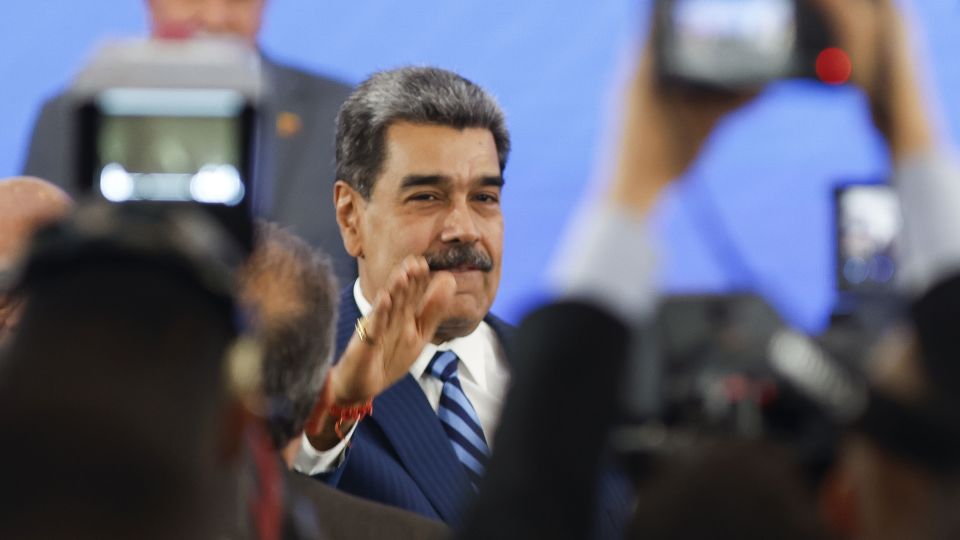Politics
Washington’s new militarized campaign against Venezuela, framed as a drug war, is in reality a risky attempt to blunt China’s rising influence in Latin America—and it may only accelerate the region’s shift away from the United States.

America’s Worry
It’s not about drugs. Washington has a long history of using the “war on narcotics” as cover for covert operations, and in Venezuela today, the real source of alarm is China. Beijing has become Caracas’s most dependable lifeline, underwriting more than US$60 billion in loans, running oil-for-credit schemes, building joint ventures, infrastructure, and even a satellite ground station, all coming together to cement a long-term strategic presence. In 2024 alone, bilateral trade hit US$6.4 billion, with China importing US$1.6 billion in Venezuelan oil and minerals and exporting US$4.8 billion in manufactured goods.
Venezuela is far from an outlier. Across Latin America, Sino-regional trade surged to US$518 billion, with direct investment totaling US$14.7 billion, creating a sprawling parallel economic architecture of ports, refineries, mines, 5G networks, and credit lines that regional governments now treat as indispensable. Even though the US still dominates the region in cumulative FDI—over US$1 trillion—China is rapidly eroding American influence, winning leverage not through ideology or coercion, but through markets, capital, and sustained economic engagement.
For Washington, this is not commerce; it is geopolitical encroachment that directly pushes against the so-called Munro Doctrine, turning the US “backyard” into a zone where Washington’s influence is not decisive anymore. The Monroe Doctrine, declared by President James Monroe in 1823, held that the Americas were under US influence and off-limits to outside, i.e., European, interference. Over time, it became the foundation of Washington’s dominance in the Western Hemisphere. Today, China’s deep economic and strategic footprint in Latin America is quietly—but surely—undermining that century-old principle, challenging US control in its own backyard.
Yet instead of matching Beijing’s patient economic game, the US is increasingly relying on force—missiles, warships, and military threats—to reassert influence in its own hemisphere. In Venezuela, that approach is especially dangerous: every escalation risks doing exactly what Washington fears most, driving Latin America further into China’s orbit and underscoring the stark reality that America no longer wins with markets.
The zero-sum American Mindset
That China is the real target is not irrelevant. China’s successes are seen, in a zero-sum manner, as Washington’s loses. It was always known, although it gets little mention in the ongoing US official discourse about Venezuela. Perhaps the US does not wish to complicate its ongoing trade talks with China to ‘end’ the trade war that Washington has lost. However, elements of the current US administration had already made clear, even before capturing power in the latest presidential elections, that China cannot be allowed to expand its presence in the region.
In 2024, The Economist spotlighted China’s “dramatically” growing footprint across Latin America—a shift that seems to have triggered alarm bells in Washington. The US Secretary of State (and National Security Advisor) Rubio had warned, even before assuming his current positions, that America “can’t afford to let the Chinese Communist Party expand its influence and absorb Latin America … into its private political-economic bloc.” Yet, he lamented, many regional leaders have merely shrugged. Now, Rubio appears determined to turn up the pressure—and he’s starting with Venezuela.
Beijing’s inroads stretch far beyond Caracas. Earlier this year, left‑leaning Brazilian President Luiz Inácio Lula da Silva joined a Latin American summit in Beijing, signaling his willingness to coordinate on key geopolitical issues, including backing China’s position on Ukraine. At the same time, China quietly opened its first major deep‑water, “smart” port in Latin America: the $3.5 billion Chancay megaport in Peru, operated by COSCO and equipped with unmanned cranes, 5G networks, and driverless trucks. Xi Jinping praised the port as a “new land-sea corridor” linking Latin America and Asia. According to Chinese state media, Chancay can cut shipping times between Peru and China by nearly 12 days while reducing logistics costs by 20%. Diplomatically too, Beijing is undeterred. When pressed on US interventionism, Chinese Foreign Ministry spokesman Lin Jian retorted in September that Latin America is “no one’s backyard,” an explicit rebuke to American regional dominance. Accordingly, in November, Foreign Ministry spokeswoman Mao Ning condemned Washington’s “excessive force” against boats in the Caribbean and insisted that “cooperation between China and Venezuela is the cooperation between two sovereign states, which does not target any third party.”
The Possibility of Backfire
America’s strategy therefore can—and will—backfire. It will only make regional states more open towards Beijing and more apprehensive towards the US (interventionism and unpredictability). At the 2025 China–CELAC Forum, Gustavo Petro, President of Colombia, called for a “dialogue of civilizations” and said China and Latin America should forge a new model of cooperation—not one imposed by external powers. This sentiment exists across Latin American states, including, for instance, Brazil.
What Washington must understand is that China’s patient, capital-driven strategy, combining trade, investment, infrastructure, and diplomacy, has created a durable foothold that the US cannot simply displace with missiles or threats, although it can introduce temporary disruptions only through a military approach. Still, every escalation in Venezuela risks cementing the very outcome Washington fears: a hemisphere where American influence is conditional and secondary. If the US hopes to reclaim strategic authority, it must first confront the uncomfortable truth that power in the 21st century is won with markets, credit lines, and long-term partnerships, not just force. Until it does, the Monroe Doctrine will remain a relic, and Latin America a proving ground for China’s quiet but decisive ascendancy.
Salman Rafi Sheikh, research analyst of International Relations and Pakistan’s foreign and domestic affairs
Follow new articles on our Telegram channel

No comments:
Post a Comment